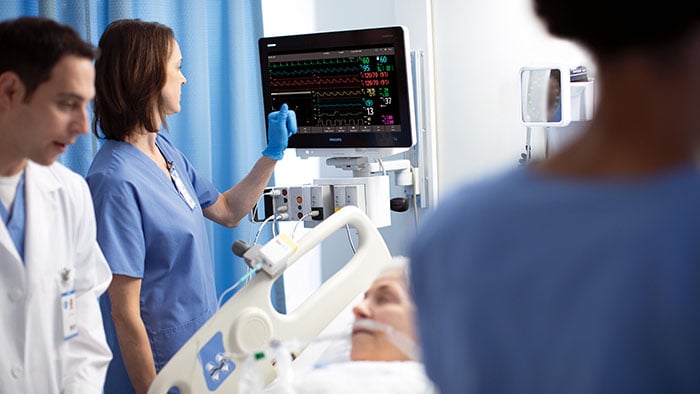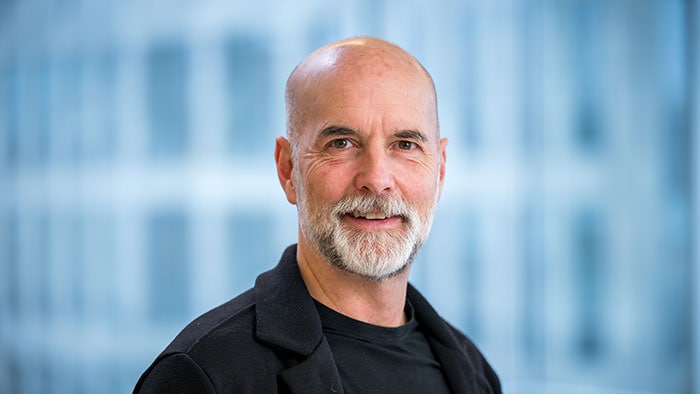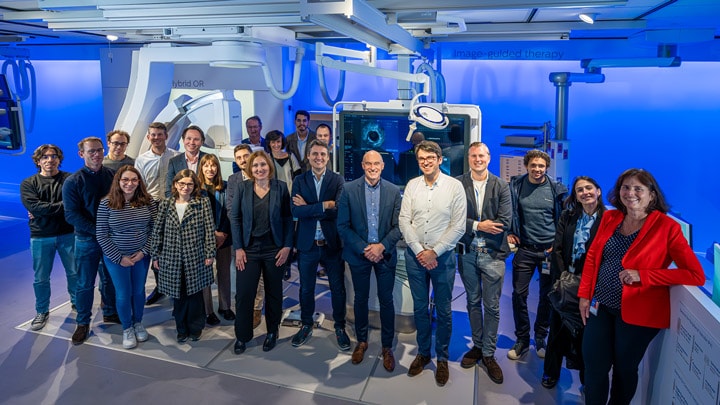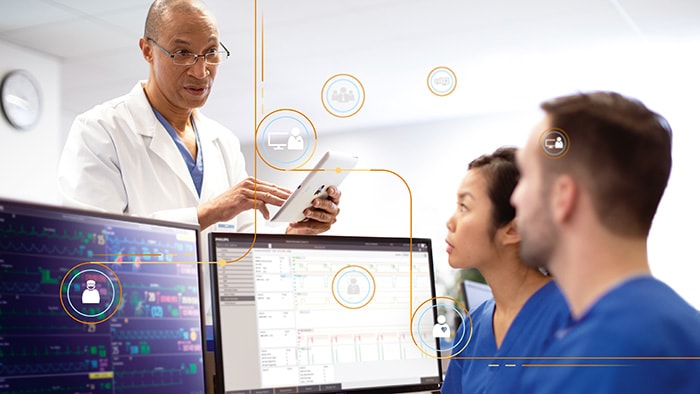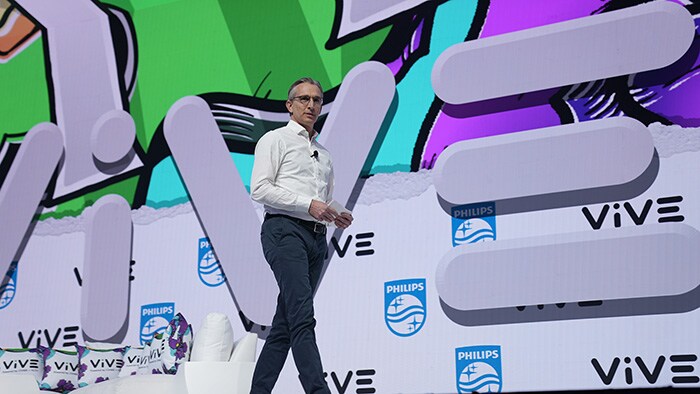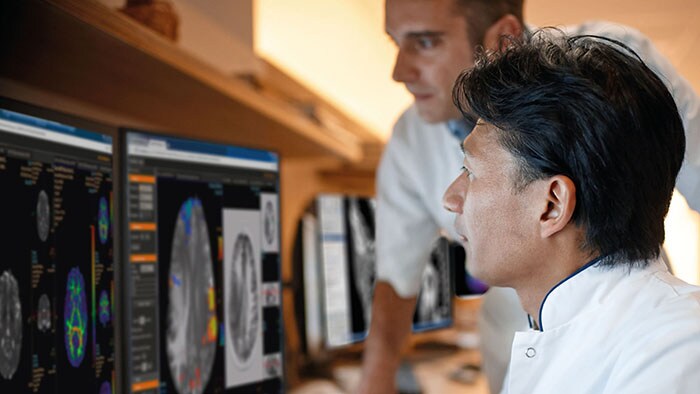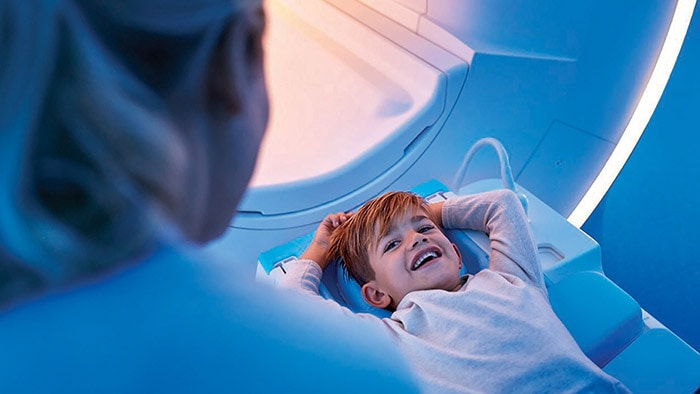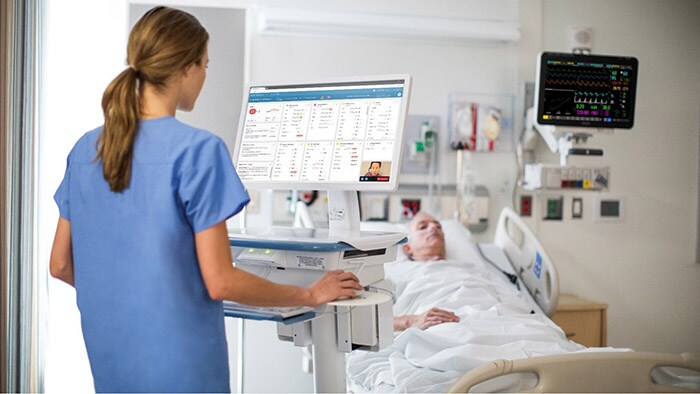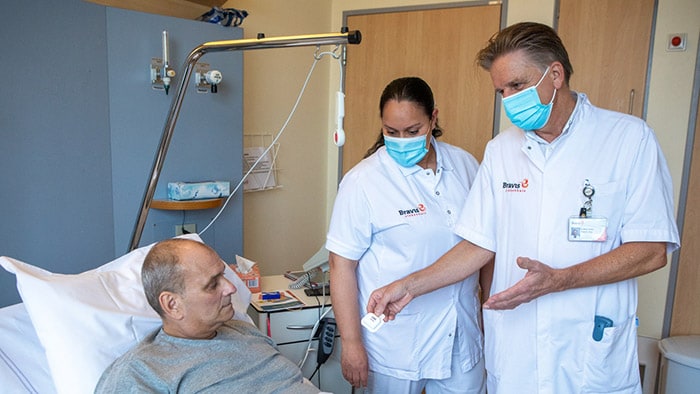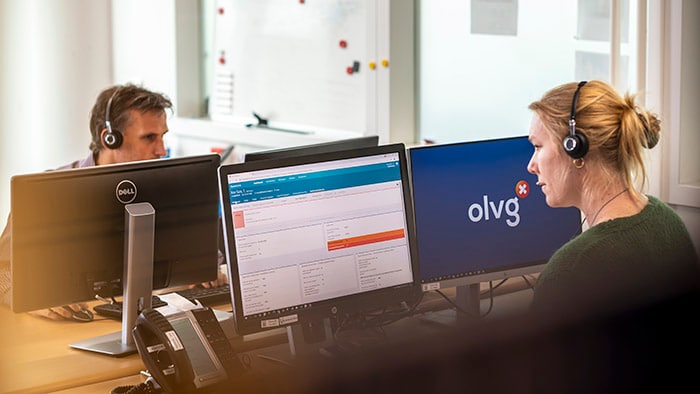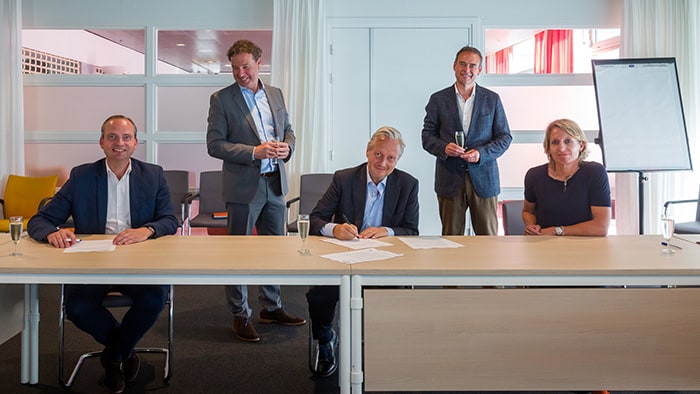Dagelijks maken miljoenen mensen in de zorg gebruik van de softwaretoepassingen van Philips. Hoe zorg je ervoor dat de honderden ontwerpteams achter deze applicaties dezelfde consistentie en gebruikerservaring toepassen? Bij Philips Design werd een ontwerpplatform ontwikkeld met één uniforme taal voor ontwerpteams: het Filament Design Language System. Tijdens de Dutch Design Week van 21 tot 29 oktober vertellen Philips-ontwerpers online en in het Philips Museum meer hierover.
Verschillende gebruikers, vergelijkbare behoeften
Wie wel eens in een ziekenhuis komt, weet hoeveel verschillende apparaten er worden gebruikt voor de zorg voor patiënten. Voor zorgverleners is het van belang dat deze systemen, en de bijbehorende softwareapplicaties, makkelijk te bedienen zijn. “Deze gebruikers hebben een bepaalde verwachting van een Philipsproduct in herkenbaarheid, maar ook dat de verschillende applicaties op een vergelijkbare manier werken”, zegt Ana Neto, User Experience Designer bij Philips.
Dezelfde taal spreken
Om ervoor te zorgen dat alle Philips-software voor de gebruikers herkenbaar en gebruikersvriendelijk is, werd binnen Philips een softwareontwerpplatform ontwikkeld. “Binnen Philips hebben we een breed portfolio van producten, zowel voor de klinische omgeving als voor de persoonlijke verzorging”, zegt Mike de Regt, Experience Director bij Philips. “Iedere afdeling maakte gebruik van een eigen ontwerp platform.” De uitdaging was om deze afzonderlijke platformen te combineren in een gezamenlijk systeem. “Belangrijk hierbij was allereerst dat we dezelfde taal leerde spreken. Wat is een button, wat bedoelen we met kleur, dat soort basale afspraken moesten gemaakt worden.” Deze gezamenlijke taal werd vastgelegd in het Filament Design Language System.
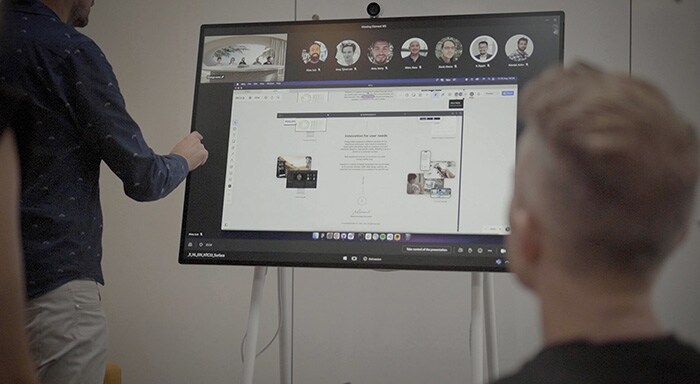
Bouwstenen voor applicaties
Vervolgens werden gezamenlijk elementen ontworpen die als bouwstenen worden gebruikt voor een nieuwe softwareapplicatie. Ontwerpers kunnen deze bouwstenen gebruiken en afstemmen op de behoeften van gebruikers. Ana: “Ze worden hierin actief begeleid om het systeem zo goed mogelijk te gebruiken en te leren van de best practices binnen Philips. Dit bespaart de ontwerpers tijd, het zorgt voor consistente kwaliteit van onze Philips-applicaties en maakt de applicaties compatibel met elkaar.”
Het Filament Design Language System bespaart de ontwerpers tijd, zorgt voor consistente kwaliteit en maakt de applicaties compatibel met elkaar.
De taal van de klant
Dagelijks werken 40 designers en ontwikkelaars aan het testen en verbeteren van het platform. Alle applicaties die naar de markt worden gebracht, worden getest door gebruikers in het ziekenhuis of thuis. Deze feedback wordt weer verwerkt in het platform. “Belangrijk hierbij was dat het systeem de lokale behoeften van productteams respecteert, waardoor ze kunnen experimenteren en zich kunnen aanpassen aan de veranderende eisen van de klant”, sluit Mike af.
Prijswinnende projecten tijdens Dutch Design Week
Het Philips Filament Design Language System werd erkend door de prestigieuze IF Design Award in 2022 en een nominatie voor de UX Design Award in 2023. Tijdens Dutch Design Week vertellen de ontwerpers meer over hun project, ervaringen en lessen in het Philips Museum en online in de Online Design Talk op 24 oktober. Schrijf je hier in voor de Filament online design talk op 24 oktober.
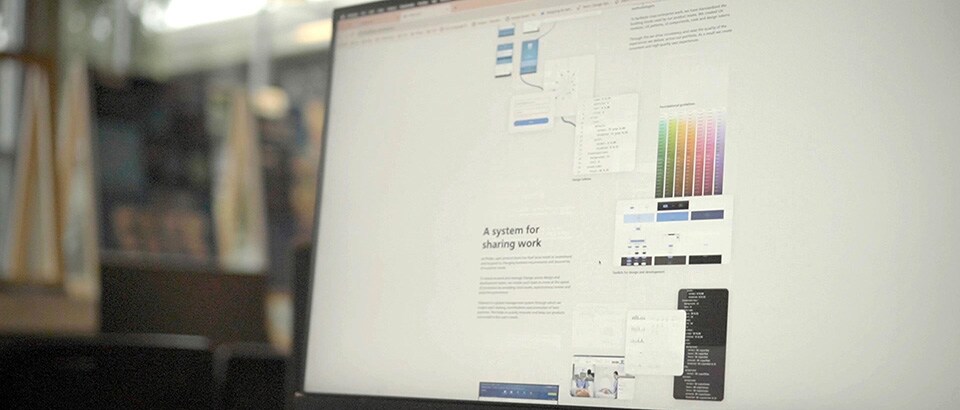
Philips designers speak the same language for software applications
Every day, millions of people in healthcare use Philips' software applications. How do you ensure that the many design teams behind these applications, apply the same consistency and user experience? Philips developed an internal design platform with one unified language for design and development teams: the Filament Design Language System. During Dutch Design Week from October 21 to 29, Philips designers will share more on this system and how it was created at the Philips Museum and during Online Design Talks.
Different users, similar needs
Anyone who has ever visited a hospital knows how many different devices are used for patient care. For caregivers, it is important that these devices and their software applications are easy to use. "These users have a certain expectation of a Philips product both in recognizability, but also in usability: the different applications should work in a similar way," says Ana Neto, User Experience Designer at Philips.
Speaking the same language
To ensure that all Philips software is recognizable and user-friendly, a software design platform was developed within Philips. "Philips has a broad portfolio of products, both for the clinical environment and for personal care," says Mike de Regt, Experience Director at Philips. "Each department was using its own design platform." The challenge was to combine these separate platforms into a common system. "What was important was that we learned to speak the same language. What is a button, what do we mean by this specific color, those kinds of basic agreements had to be made." This common language was developed into the Filament Design Language System.

Building blocks for applications
The next step was to develop different elements together that can be used as building blocks for a new software application. Designers can use these building blocks and tailor them to the needs of users. Ana: "Designers are actively guided to use the system in the best possible way, and to learn from the best practices within Philips. Using the Design Language System saves time in development, it ensures consistent quality of our Philips applications and makes the applications compatible with each other."
The Filament Design Language System saves the designers time, ensures consistent quality and makes the applications compatible with each other.
The language of the customer
40 designers and developers work daily on testing and improving the platform. All applications brought to the market are tested by users in the hospital or at home. This feedback is incorporated back into the platform. "It was important that the system respects the specific needs of product teams, allowing them to experiment and adapt to changing customer requirements," Mike concludes.
Award-winning projects during Dutch Design Week
Philips' Filament Design Language System was recognized by the prestigious IF Design Award in 2022 and a nomination for the UX Design Award in 2023. During Dutch Design Week, the designers will talk more about their project, experiences and lessons learned at the Philips Museum and online in the Online Design Talk on October 24. Register here for the Filament online design talk on October 24.
Deel op social media
Onderwerpen
Contact

René Loman
Woordvoerder a.i. Philips Benelux
Tel.: +31 6 51 85 22 26
You are about to visit a Philips global content page
Continue
